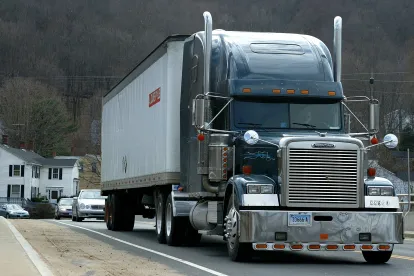Most states have some form of a tailgating law that requires drivers to maintain a “reasonable and prudent” distance behind a leading vehicle. Some states impose specific distance requirements, especially on heavy trucks. If there is not a specific distance requirement, though, is an electronically connected truck convoy maintaining a “reasonable and prudent” distance? That’s a question that many states have skirted so far, passing specific legislation to test or allow for new truck platooning electronic systems.
Truck platooning offers an exciting new opportunity for the heavy vehicle industry. One of the primary benefits of reduced distance between trucks is reduced drag, leading to fuel efficiencies. Modern truck platooning also has the potential to offer significant safety benefits, reduced accidents, and improved communications.
What exactly is truck platooning? There are a number of different definitions and technologies potentially available, but in short, truck platooning “uses radar and vehicle-vehicle communications to form and maintain a close-headway formation between at least two in-lane vehicles.” The level of automation in the driving may vary (and may eventually be determined by regulators), but the idea of truck platooning is to have some sort of assisted driving so that the two connected trucks sync up to each other and automatically maintain a set, close, distance between them. Truck platooning relies on sensors and vehicle-to-vehicle communications between the connected trucks. For example, if the lead vehicle brakes, the follow vehicle’s brakes may be automatically activated.
Regulators have raised a number of important issues relating to truck platooning, including cybersecurity, data privacy, litigation, and performance testing and evaluation. Driver acceptance will be important in the adoption of truck platooning, as will details about how to “share” the fuel cost savings between the leader and follower vehicles. Ultimately, several states currently allow for truck platoons, with various levels of oversight, although Missouri’s governor vetoed a bill to allow for such testing there, citing potential safety concerns. For its part, the National Highway Traffic Safety Administration has initiated rulemaking that would create new standards governing vehicle-to-vehicle communications, explaining that it believes V2V “could move us from helping people survive crashes to helping them avoid crashes altogether – saving lives, saving money and even saving fuel thanks to the widespread benefits it offers.
Perhaps the biggest question involving V2V is the potential litigation risk if a company adopts, or doesn’t adopt, vehicle-to-vehicle communications, including truck platooning. Hacking is a significant concern to many. Notably, however, NHTSA’s report on V2V noted the concerns regarding liability and explained that “[t]he Federal Government has multiple available tools to limit legal liability, when Congress deems it appropriate to do so.” Federal preemption of state tort laws when V2V is in use would likely prompt quick adoption of the technology, given its other benefits. NHTSA also identified capped liability and statutory immunity as potential risk-shifting mechanisms, although it noted that not all manufacturers considered liability protection as necessary before V2V is widely adopted. NHTSA has received a number of comments specific to the issue of tort liability.
Truck platooning and other V2V and assisted driving technologies present both great challenges and great opportunities for the industry and drivers on the road. The availability of cost savings and increased safety, however, may be diminished by newfound litigation risks.




 />i
/>i

